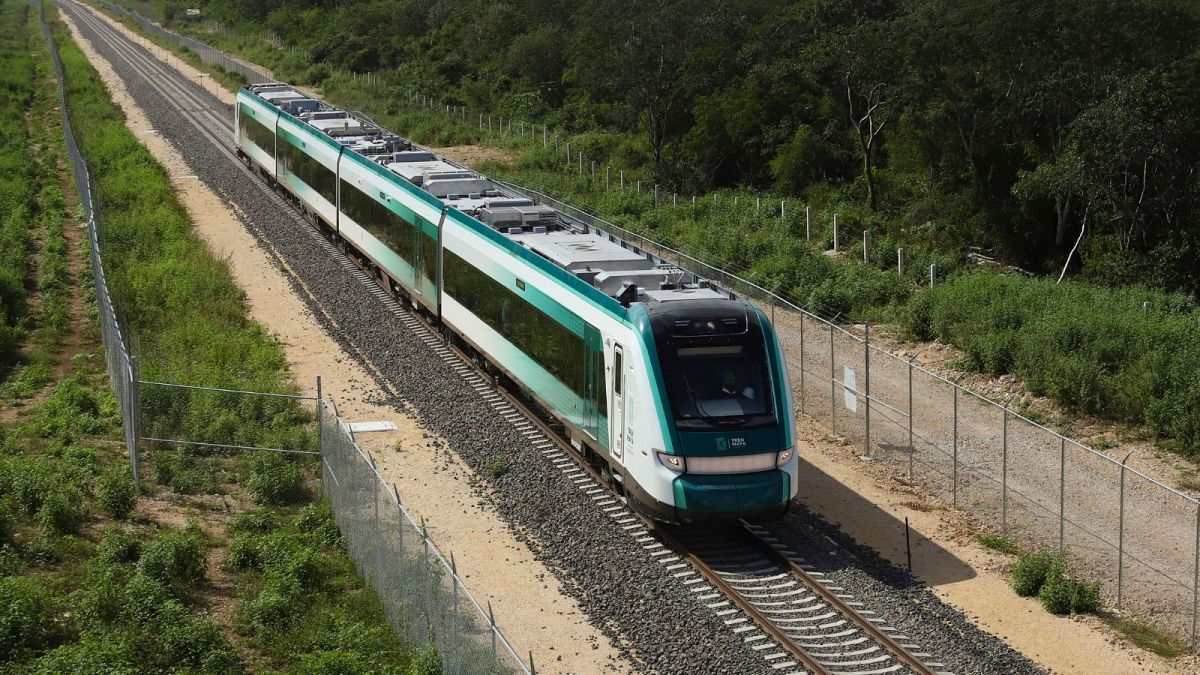Exploring Mexico’s diverse landscapes has just got easier thanks to a major new train network.
Tren Maya (meaning Maya Train) connects the Latin American country’s beautiful beaches with its legendary Mayan ruins.
Part of the southeast route opened in December, taking passengers from the popular coastal city of Cancun to Campeche.
The seven-leg network is due to be completed by the end of February - extending 1,525 kilometres in a rough loop around the Yucatán Peninsula.
It’s good news for those wanting to visit this stunning area of Mexico in a more sustainable way, but locals say the making of Tren Maya has come at a heavy environmental cost.
Where does Tren Maya go?
The Tren Maya network spans the Mexican states of Chiapas, Campeche, Tabasco, Yucatán and Quintana Roo.
Its first section runs from Palenque, famed for its Mayan sites, to the small town of Escárcega in Campeche, before progressing to Calkiní and Izamal with a number of station stops along the way.
Passengers can then catch a ride to the coastal resorts of Playa del Carmen and Bacalar, and the ancient landmarks at Tulum and Xpujil. The route conveniently links up with Merida and Cancun airports.
Designed by France-based train giant Alstom, the trains come in three different shapes: regular ‘Xiinbaal’ carriages, fitted with huge panoramic windows; ‘Janal’ restaurant cars with room for regional dining; and ‘P'atal’ cars for long-distance daytime and overnight travel.
Alstom says its electric train design is an exclusive one for Mexico, with exteriors inspired by regional art and the ‘majesty of the jaguar’.
So it's somewhat ironic that - among other environmental impacts - the new route has been called catastrophic for the habitats of species including jaguars, spider monkeys and scarlet macaws.
Why is the Tren Maya controversial?
Critics say the train network construction has risked doing irreversible damage to some of the unique ecosystems it is taking tourists to see.
The peninsula’s limestone geology means it is hollowed out with thousands of underground caves known as ‘cenotes’, filled with pristine freshwater.
Some parts of the Maya Train route have been built above these fragile cave systems, despite the objections of ecologists, cave divers and archaeologists.
Mexican president López Obrador has raced to finish the infrastructure project before he leaves office in September, news agency Associated Press reports.
In 2018, Obrador promised that not a single tree would be cut down for the Maya Train. The government has subsequently acknowledged that 300,000 had been felled in 2022, but observers put the real number as high as 9 million.
Activist group ‘Sélvame del Tren’ (meaning ‘save me from the train’) claims that ‘etnocide’ has been committed, as there has been no consultation with Indigenous peoples during this period of deforestation and environmental damage.
And Train Maya has faced further criticism for being mainly geared towards tourists, despite earlier promises that it would serve locals.
How much are Tren Maya tickets and where can you buy them?
Originally, officials had planned on charging separate, lower fares for Mexicans on the line, while foreign tourists would pay a higher fare.
But the prices listed for the first runs in December were differentiated only by first-class and “tourist class” tickets.
A first-class ticket on one of the two trains from Cancun to Merida each day will cost the equivalent of €62. A first-class bus ticket on the same route costs about €53, with buses leaving around every half hour.
Train Maya tickets can currently be booked through this link.
It’s unclear whether the network will be fully operational by the end of February as scheduled; AP reporters noted that even the first part of the project is still under construction, with just the single lane of a planned double-lane track open last month.
But despite the bumpy start, it does mark a significant upgrade to Mexico’s transport infrastructure.
Currently, only a few tourist trains run on relatively short, unconnected routes to tourist attractions like northern Mexico’s Copper Canyon and the western tequila-producing region around Jalisco.


